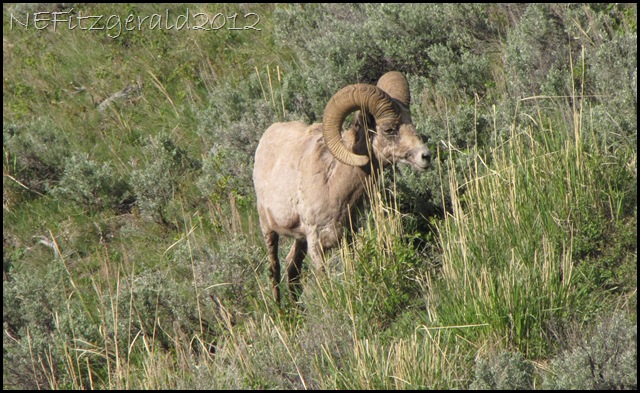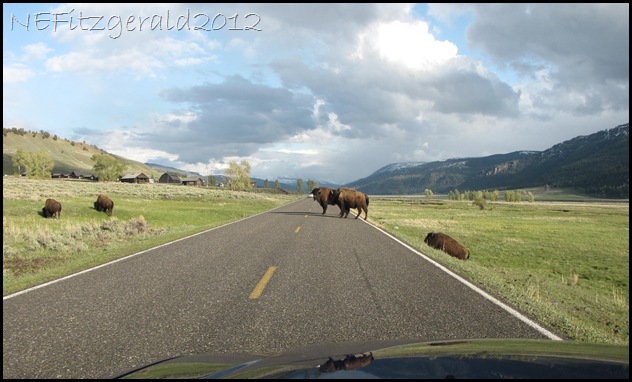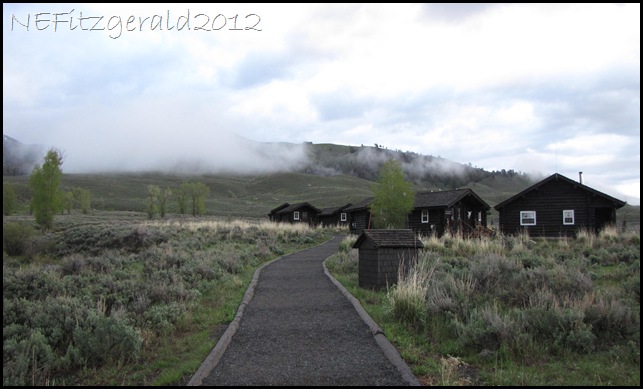Yikes! Time sure has a way of slipping by, doesn’t it? I was gone from Grant Village for a week at the end of May, taking a “Tracks & Mammal Signs” class with the Yellowstone Association Institute. Internet access is non–existent at the Lamar Buffalo Ranch where I stayed, and so I got waaaay behind on keeping up with Watching For Rocks and tweaking my summer programs. But honestly, spending time up in Lamar Valley in the Northern Range of Yellowstone is well worth being out of touch with the world for a while.
 |
| Stream through Lamar Valley |
On the drive up from Grant Village to Lamar Valley I came upon some bighorn sheep grazing a hillside just east of the Tower–Roosevelt area.
 |
||
| Bighorn sheep on hillside east of Tower-Roosevelt |
 |
| Male bighorn sheep |
Just west of Lamar Valley I stopped to watch a herd of pronghorn…
 |
| Pronghorn |
…and they stopped to watch me in return.
 |
| Who’s watching whom? |
The road passes through Lamar Canyon with its massive cliffs of 2.5 billion year old Beartooth Block metamorphic rocks, and soon the Buffalo Ranch comes into view across Lamar Valley.
 |
| Park road in Lamar Valley; buildings on left are the Buffalo Ranch |
 |
| Why does the bison cross the road? |
Anyone taking a class with the Institute most likely will stay at the Buffalo Ranch – you sleep in a tidy cabin with three bunks and lots of hooks on the walls, and cook in a communal kitchen in the old bunkhouse. The Ranch was established in 1907 when 28 bison were moved from Fort Yellowstone to the Lamar Valley in the northeast portion of the park to preserve one of the last free-roaming bison herds in the United States.
According to the NPS website, “Buffalo ranching operations continued at Lamar until the 1950s. The valley was irrigated for hay pastures, and corrals and fencing were scattered throughout the area. Remnants of irrigation ditches, fencing, and water troughs can still be found. Four remaining buildings from the original ranch compound are contained within the Lamar Buffalo Ranch Historic District (two residences, the bunkhouse, and the barn) and are on the National Register of Historic Places. In the early 1980s, old tourist cabins from Fishing Bridge were brought to Lamar to be used for Yellowstone Association Institute classes.”
 |
| Early morning fog hovers above the Lamar River |
 |
| Cabins at Lamar Buffalo Ranch |
 |
| Historic bunkhouse |
So that’s it for getting there. In my next post I’ll let you know what I did during my four–day extended stay (involving not a small amount of plaster of Paris and a good bit of slogging across mucky river bottoms…).
Stay tuned!






